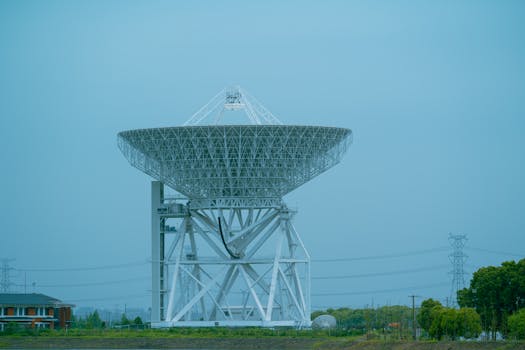
Satellite Telecommunications 2023: What’s New and What’s Next? Satellite Telecommunications
The satellite telecommunications industry is rapidly evolving, with new technologies and innovations emerging in 2023. Satellite telecommunications play a crucial role in providing global connectivity, especially in remote and underserved areas. In this article, we will explore the latest developments and future trends in satellite telecommunications.
One of the significant advancements in satellite telecommunications is the launch of new satellite constellations. These constellations, such as Starlink and OneWeb, aim to provide high-speed, low-latency internet connectivity to underserved areas. They use a large number of small satellites in low Earth orbit (LEO) to provide coverage, which is more efficient and cost-effective than traditional geostationary satellites.
Another area of development is the use of advanced technologies such as 5G and quantum computing in satellite telecommunications. 5G networks are being integrated with satellite communications to provide seamless and ubiquitous connectivity. Quantum computing is being used to enhance the security and efficiency of satellite communications, enabling faster and more secure data transmission.
Emerging Trends in Satellite Telecommunications
In addition to the launch of new satellite constellations and the integration of advanced technologies, there are several emerging trends in satellite telecommunications. One of the key trends is the growing demand for satellite-based broadband services. This is driven by the increasing need for high-speed internet connectivity in remote and underserved areas, as well as the growing adoption of IoT devices and smart technologies.
Another trend is the use of satellite telecommunications in the provision of emergency response and disaster relief services. Satellites can provide critical connectivity in areas affected by natural disasters, enabling emergency responders to communicate and coordinate their efforts. This is particularly important in areas where traditional communication infrastructure has been damaged or destroyed.
Challenges and Opportunities in Satellite Telecommunications
Despite the many advancements and emerging trends in satellite telecommunications, there are several challenges that need to be addressed. One of the significant challenges is the issue of space debris. The increasing number of satellites in orbit is creating a growing risk of collisions and space debris, which can have serious consequences for the environment and the safety of satellites and other space-based assets.
Another challenge is the need for regulatory frameworks that can keep pace with the rapid evolution of satellite telecommunications. There is a need for clear and consistent regulations that can ensure the safe and responsible use of satellite technologies, as well as protect the rights of users and stakeholders.
Conclusion
In conclusion, the satellite telecommunications industry is rapidly evolving, with new technologies and innovations emerging in 2023. The launch of new satellite constellations, the integration of advanced technologies such as 5G and quantum computing, and the growing demand for satellite-based broadband services are just a few of the key trends and developments in the industry. However, there are also several challenges that need to be addressed, including the issue of space debris and the need for regulatory frameworks that can keep pace with the rapid evolution of satellite telecommunications.




